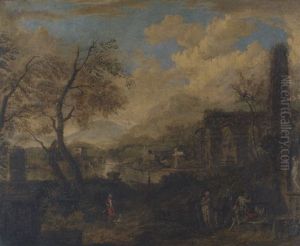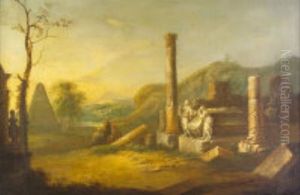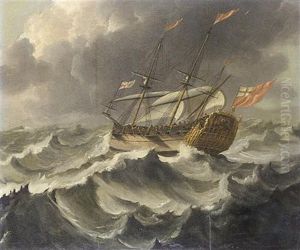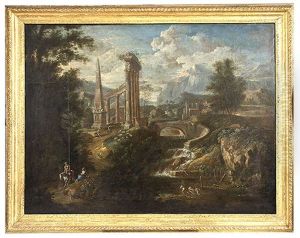Willem van der Hagen Paintings
Willem van der Hagen is a somewhat enigmatic figure in the history of art, primarily because there is little documented information about his early life, including his birth year. What is known is that he is considered the father of Irish landscape painting. His nationality is often disputed, with some sources suggesting he was Dutch, while others argue he may have been German. Nevertheless, his influence on the Irish art scene of the 18th century is well recognized.
Van der Hagen's presence in Ireland is recorded from the 1720s onward. He is believed to have settled in Dublin and was one of the first artists to capture the Irish landscape, which had not been commonly represented in art prior to his arrival. His work often depicted the lush greenery, rolling hills, and grand estates of Ireland, and he was particularly skilled at incorporating atmospheric effects into his paintings.
Throughout his career in Ireland, van der Hagen received commissions from the nobility to create paintings of their estates, which were not only works of art but also symbols of their owners' wealth and status. His paintings were characterized by a clear attention to detail and a penchant for depicting the serene and idyllic aspects of the Irish countryside. Van der Hagen's contributions to the arts in Ireland were significant in that he helped to foster an appreciation for landscape painting, which would flourish in subsequent decades.
Willem van der Hagen died in 1745. Despite the lack of extensive personal biographical details, his legacy is maintained through the works he left behind, which continue to be studied and admired for their early representation of the Irish landscape and their role in the development of Irish art. His death marked the loss of an influential pioneer in Irish painting, but his influence persisted, paving the way for future artists in Ireland to explore and celebrate their natural surroundings through art.





















